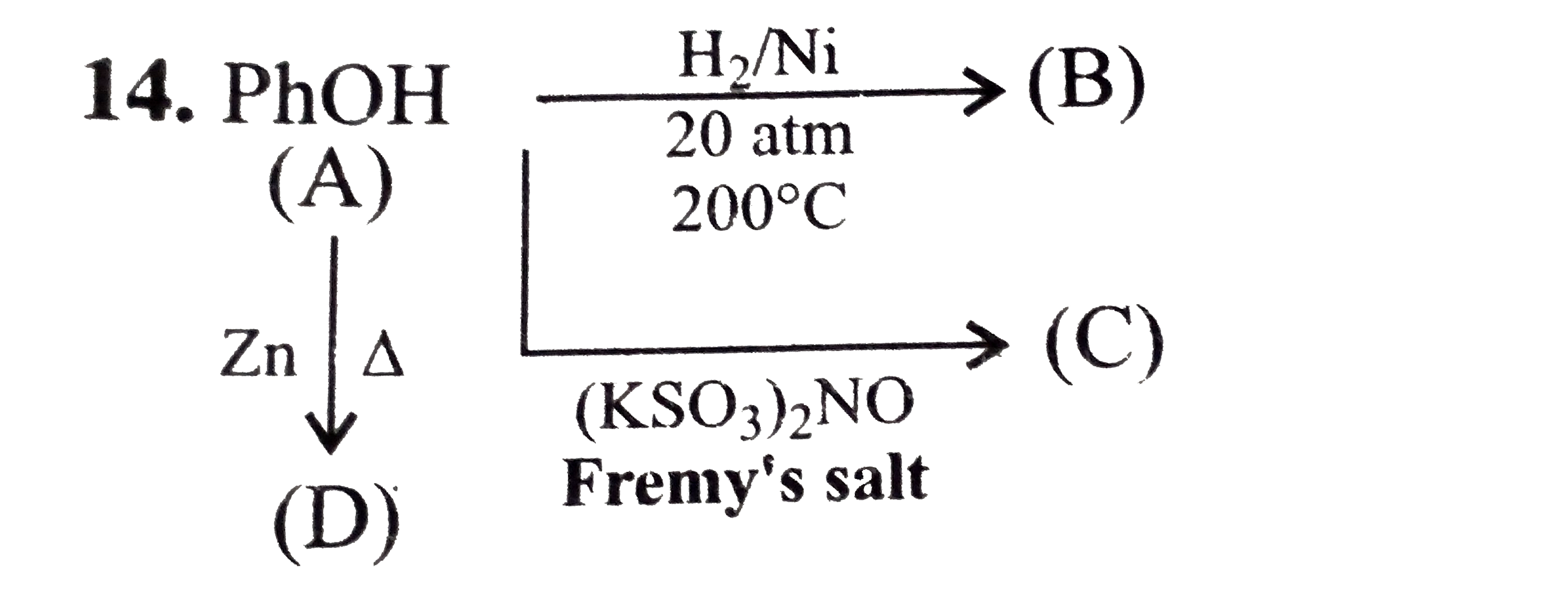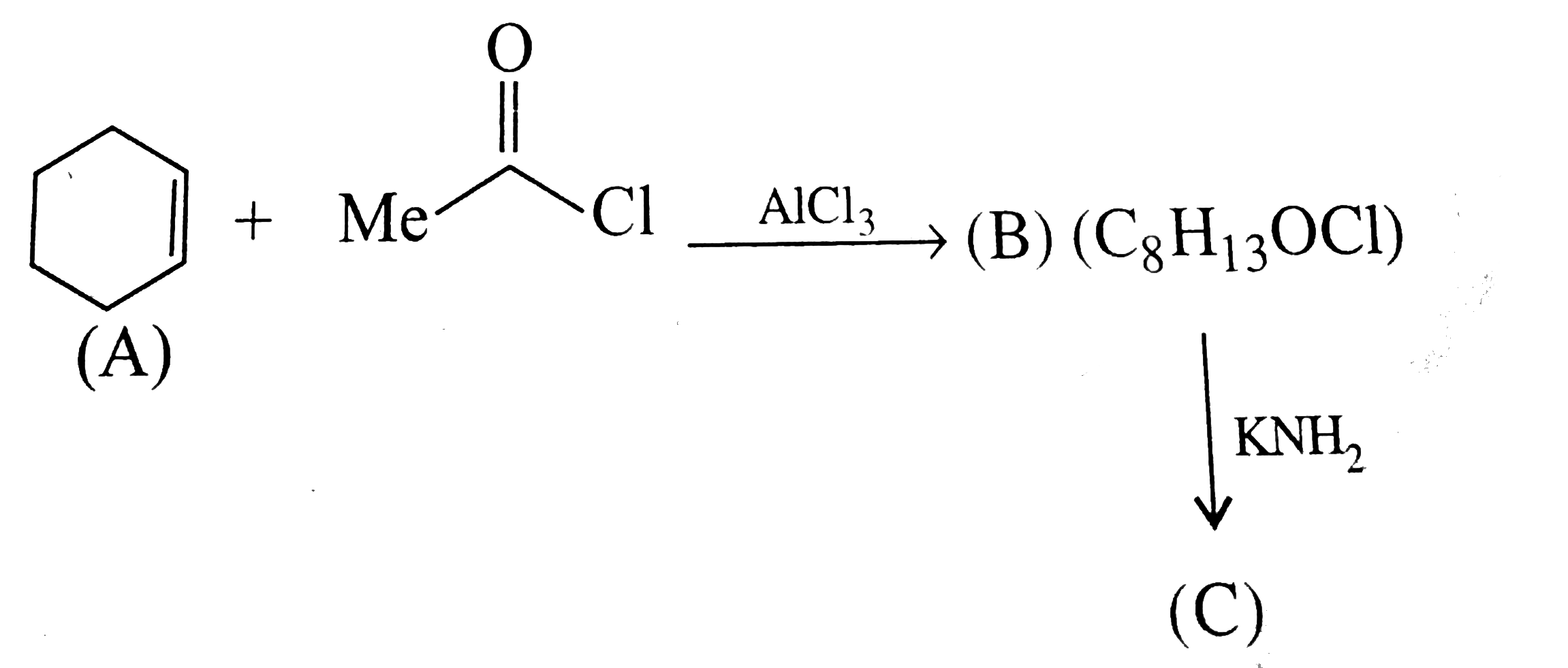A compound 'A' when reacts with LiAlH4 it gives two compounds B and C along with LiCl. Compounds A, B and C respectively are
HCl, H2 and AlCl3
BCl3, H2 and AlCl3
BCl3, B2H2 and AlCl3
B2H6, BCl3 and AlCl3
To solve the problem, we need to identify the compounds A, B, and C based on the reaction with lithium aluminum hydride (LiAlH₄) and the formation of lithium chloride (LiCl).
1. Identify Compound A:
- The question states that compound A reacts with LiAlH₄ to produce two compounds (B and C) and LiCl. Since LiAlH₄ is a strong reducing agent, it typically reacts with halides. The presence of LiCl suggests that compound A likely contains chlorine.
- A common compound that fits this description is phosphorus trichloride (PCl₃).
2. Determine the Reaction:
- When PCl₃ reacts with LiAlH₄, it can undergo reduction. The reaction can be represented as:
PCl3+LiAlH4→B+C+LiCl
- Here, the LiCl is formed from the chlorine atoms in PCl₃.
3. Identify Compounds B and C:
- The reaction of PCl₃ with LiAlH₄ typically leads to the formation of diborane (B₂H₆) and aluminum chloride (AlCl₃). Thus, we can identify:
- Compound B: Diborane (B₂H₆)
- Compound C: Aluminum chloride (AlCl₃)
4. Final Identification:
- Therefore, we can summarize the compounds as follows:
- Compound A: Phosphorus trichloride (PCl₃)
- Compound B: Diborane (B₂H₆)
- Compound C: Aluminum chloride (AlCl₃)
Conclusion:
The compounds A, B, and C respectively are:
- A: PCl₃ (Phosphorus trichloride)
- B: B₂H₆ (Diborane)
- C: AlCl₃ (Aluminum chloride)
- The question states that compound A reacts with LiAlH₄ to produce two compounds (B and C) and LiCl. Since LiAlH₄ is a strong reducing agent, it typically reacts with halides. The presence of LiCl suggests that compound A likely contains chlorine.
- A common compound that fits this description is phosphorus trichloride (PCl₃).
- When PCl₃ reacts with LiAlH₄, it can undergo reduction. The reaction can be represented as:
PCl3+LiAlH4→B+C+LiCl
- Here, the LiCl is formed from the chlorine atoms in PCl₃.
- The reaction of PCl₃ with LiAlH₄ typically leads to the formation of diborane (B₂H₆) and aluminum chloride (AlCl₃). Thus, we can identify:
- Compound B: Diborane (B₂H₆)
- Compound C: Aluminum chloride (AlCl₃)
- Therefore, we can summarize the compounds as follows:
- Compound A: Phosphorus trichloride (PCl₃)
- Compound B: Diborane (B₂H₆)
- Compound C: Aluminum chloride (AlCl₃)
The compounds A, B, and C respectively are:
- A: PCl₃ (Phosphorus trichloride)
- B: B₂H₆ (Diborane)
- C: AlCl₃ (Aluminum chloride)
Topper's Solved these Questions
Similar Questions
Knowledge Check

Compound A,B and C are respectively:ABiCI3,Bi(OH)3 and BiOCIBBi(OH)3,BiCI3 and BiOCICBi(OH)3,BiOCI and Bi(OH)3DBiCI3,BiOCI and BiOCI
Compounds (B) and (C ), respectively, are:A B
B C
C D
D

The compounds (B) and (C ), respectively, are:Aa. Bb.
Bb. Cc.
Cc. Dd.
Dd.
A nitraite on acid hydrolysis gives compound A, which reacts with thionyl chloride to give compound B. Benzene reacts with compound B in presence of anhydrous AlCl3 to give compound C. The compound B reacts with ethyl alcohol to give ester D. Identify the compounds A,B C and D and write the equations.
View Solution
The compound (B) and (C ), respectively, are:
View SolutionIn the reaction ,

The compounds A,B and C are respectively
View Solution
The compounds (B), (C ), (D), respectively are:
View SolutionThe compound which on reduction with LiAlH4 gives two different alcohols is:
View Solution


